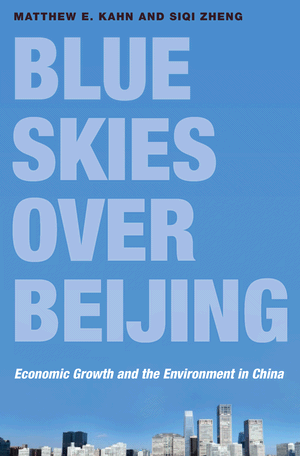From the Editor: Every summer, PERC welcomes dozens of visiting environmental scholars and practitioners to share their ideas with our community.
The United States and China both face a dual challenge: improve labor market opportunities for the less fortunate, hence reducing income inequality, while also seeking to improve environmental quality. Are these goals compatible, or are both nations confronted with fundamental tradeoffs?
As the U.S presidential election of 2016 unfolds, Donald Trump dismisses the challenge of climate change and wants to renegotiate the promises that the United States made at the December 2015 COP 21 meetings in Paris. Republican Party leaders have long argued that environmental protection is costly for low-skilled workers. They claim that pollution taxes and regulations raise energy prices and thus increase the costs of doing business, and ultimately accelerate the offshoring of U.S jobs. They dismiss the promise of “green jobs.”
The more surprising turn of events is that the Democratic Party is having an internal fight over climate change priorities. Today’s Party faces a policy divide between union interests, who seek new job opportunities offered by projects such as the Keystone Natural gas pipeline, and environmental interest groups and high profile Democrats such as San Francisco’s Tom Steyer, who support a green agenda. Construction unions have responded angrily: “We object to the political agenda of the A.F.L.-C.I.O. being sold to a job-killing hedge fund manager with a bag of cash,” wrote Terry O’Sullivan, general president of the Laborers’ International Union of North America, in a recent letter to the AFL-CIO.
Similar issues are being debated in China now. Over the past 30 years, China has fueled its amazing growth by burning coal—the country’s total coal consumption roughly equals the rest of the world’s consumption combined. This has caused high levels of urban air pollution, and China is now the world’s largest greenhouse gas emitter.
China’s Communist Party (CCP) leaders face a key tradeoff. They seek to reduce the local and global pollution consequences of growth while continuing to enjoy robust macroeconomic progress. At the COP 21 meetings, China promised that its greenhouse gas emissions would peak in 2030, by which time its carbon intensity (emissions per dollar of GDP) would decline to 60 percent of its 2005 level.
China’s economy, which features a mix of private companies and state-owned companies (SOEs), has slowed down in recent months. Academic economists have argued that China’s growth would accelerate if the SOE’s share of the economy were to shrink. The Chinese leadership has prepared for a mass downsizing of the nation’s bloated state-owned industries by laying off more than 1.8 million steel and coal workers. Reducing steel production and coal mining activity would improve environmental quality, but the affected workers are protesting such a shift. According to China Labor Bulletin, there were more than 1,300 such protests in 2014, and in 2015 the number rose to more than 2,700—including more than one a day in Guangdong Province. This trend has continued into 2016.
The Chinese central government is worried that the rise of political consciousness among the working class could threaten political stability. Facing this risk, the CCP is debating whether to reverse the downsizing of the bloated heavy industries by again investing in and shifting resources to those industries. For example, the coal workers in Heilongjiang province took to the streets to protest against the decision of the state-run Longmay Mining Group to lay off more than 100,000 workers in March. The protests forced the provincial governor to issue a statement promising “financial support” for the firm to preserve the jobs. Such new investments could have a “lock in” effect, slowing down the Chinese economy’s transition to a green economy.
Just as Tom Steyer seeks “blue skies” for his California family, the highly educated classes in Beijing, Shanghai, and other Chinese coastal cities seek significant environmental progress both to improve their quality of life and to protect their children’s health. Such educated people are unlikely to have their employment prospects diminished by environmental taxes and regulations. This suggests that, in both nations, the pursuit of the “green agenda” will increase inequality when it comes to quality of life.

Free market environmentalism offers one clear path forward through the adoption of a carbon tax. Such a tax would set clear rules of the game that reduce policy uncertainty risk for major companies that emit greenhouse gas emissions. By adopting such a tax, many other rules and regulations—which are often inconsistent and play favorites for specific technologies—could be eliminated. A gradually rising carbon tax would send a clear signal to entrepreneurs that they would be rewarded for innovations and new products that are less carbon intensive. If the tax revenue is recycled in ways that stimulate low-skill labor demand and provide public goods that the less fortunate demand, such as early education investment, then both nations are likely to avoid political opposition to mitigating the challenge of climate change going forward.
Matthew E. Kahn is a Professor of Economics at the University of Southern California and a Research Associate of the NBER. He is a Julian Simon Fellow at PERC. Siqi Zheng is a professor and the director of Hang Lung Center for Real Estate at Tsinghua University. She is also the deputy head of the Department of Construction Management at Tsinghua University. They are the authors of the new book “Blue Skies over Beijing: Economic Growth and the Environment in China” (Princeton University Press, 2016).


